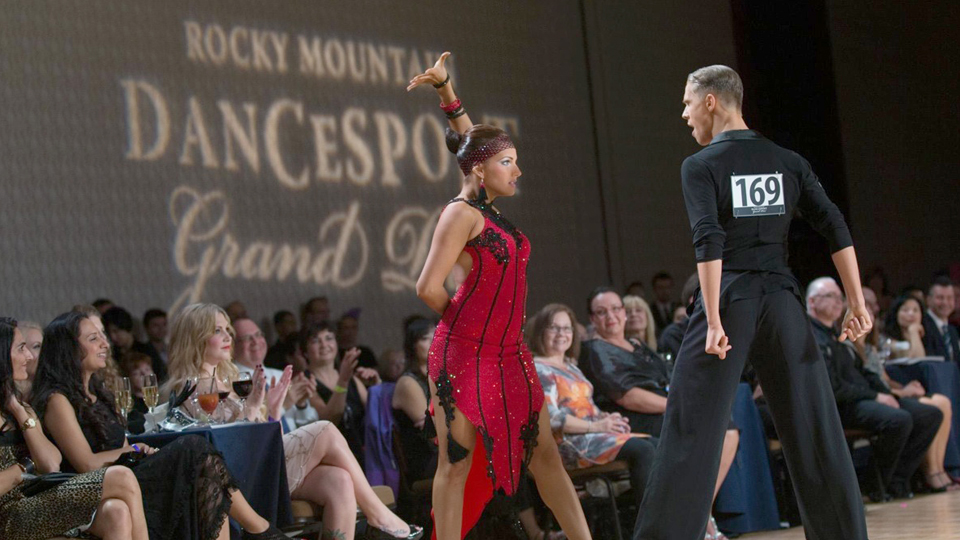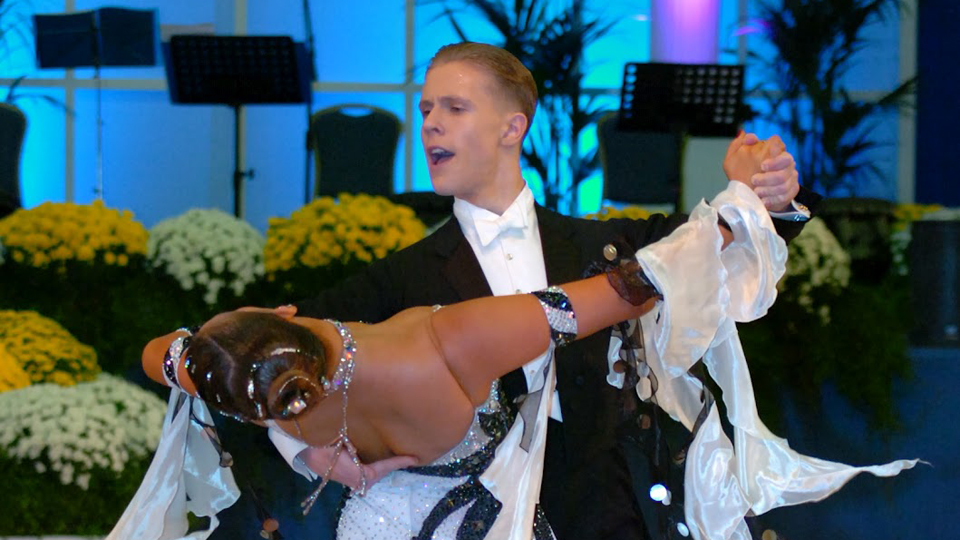As attention remains on the Winter Olympics and Canadian athletes’ wins, it’s not hard to miss other athletes representing Canada on the world stage, like UTM’s own Patrick Rucinski, a first-year part-time student in the CCIT program, an international dancesport competitor, and an under-21 world champion in ballroom dancing. Rucinski also represented Canada at the 2013 World Games.
Ballroom is a partnered dance and has two main styles: international standard, which includes waltz, tango, Viennese waltz, foxtrot, and quickstep; and international Latin, which includes samba, cha-cha-cha, rumba, paso doble, and jive. The sport is currently regulated by the International World Dancesport Federation and its national branches.
Rucinski specializes in the international standard style with his partner Ella Nusenbaum, a Ryerson student.
“The longer you dance with a partner, the more results you can achieve,” says Rucinski, who has collaborated with Nusenbaum for more than 10 years. They were paired by their parents after practising at the same dance studio when they were young. “It was funny because at that time she used to be taller than me, so we weren’t sure how it was going to work, but then I grew, so it all worked out,” he says.
Rucinski started learning ballroom at the age of five under his parents, who currently teach the Latin dance class at the RAWC, before getting professional trainers as he got older.
His team consists of a personal trainer who helps him work on fitness, local trainers for dance, and a nutritionist and dance coaches based in Italy. “Our trainers here work with the main coaches to help pick which competitions we should take part in here and which ones would be more beneficial,” says Rucinski. “The main coaches organize workshops for specific routines and help with the European scene [where most of the competitions are]. If I could, I would go every week, but it’s obviously difficult to do that.”
Rucinski trains seven days a week, for five to six hours each day, with additional fitness training four times a week. On average, he makes 10 trips a year around the world to compete on the international circuit.
As with other sports, dancesport athletes compete in the provincial and national championships in order to qualify for the world championships. Even though Canada is not considered a strong dancesport country, last December, Rucinski won the 2013 Under-21 World Championship in Ashdod, Israel.
“You know, before people used to think that America or Canada weren’t strong countries, but things are changing,” he says about his winning the World Championship. “It was a big thing, because we were the only couple that achieved the top three in the world.”
Over the last two years, Rucinski has competed in Hong Kong, Belgium, Estonia, Italy, Germany, Ukraine, Italy, and Slovenia. Travelling around the world is one of the best things about competing, he says.
One of his most memorable competitions was the 2013 World Games in Cali, Colombia. Like the Olympics, the World Games is a multi-sport event held every four years under the patronage of the International Olympics Committee and organized by the International World Games Association to showcase sports that are not in the Olympics.
“It was very big. We had about 20,000 spectators, so it was almost like a concert,” says Rucinski. “Normally in competitions, if it’s not a big one, there are around 1,000 spectators. But [in Cali], dancesport was the second-most popular sport, from what they were telling us. So that was a great experience.”
This year, Rucinski moved from the under-21 to the adult amateur category, and says this eases the pressure.
“It has been hard to focus on school as I had a crazy schedule, always travelling. I had to pull all-nighters. I had to find time to study sometimes on the plane, in airports, and even during practice,” he says. “But now I can start to focus more on what I want to become and finish studies, because it’s important to build a backup plan in case of an injury.”
Rucinski plans to learn more about business and marketing, and one day may start his own studio to train future generations of Canadian dancesport athletes.


